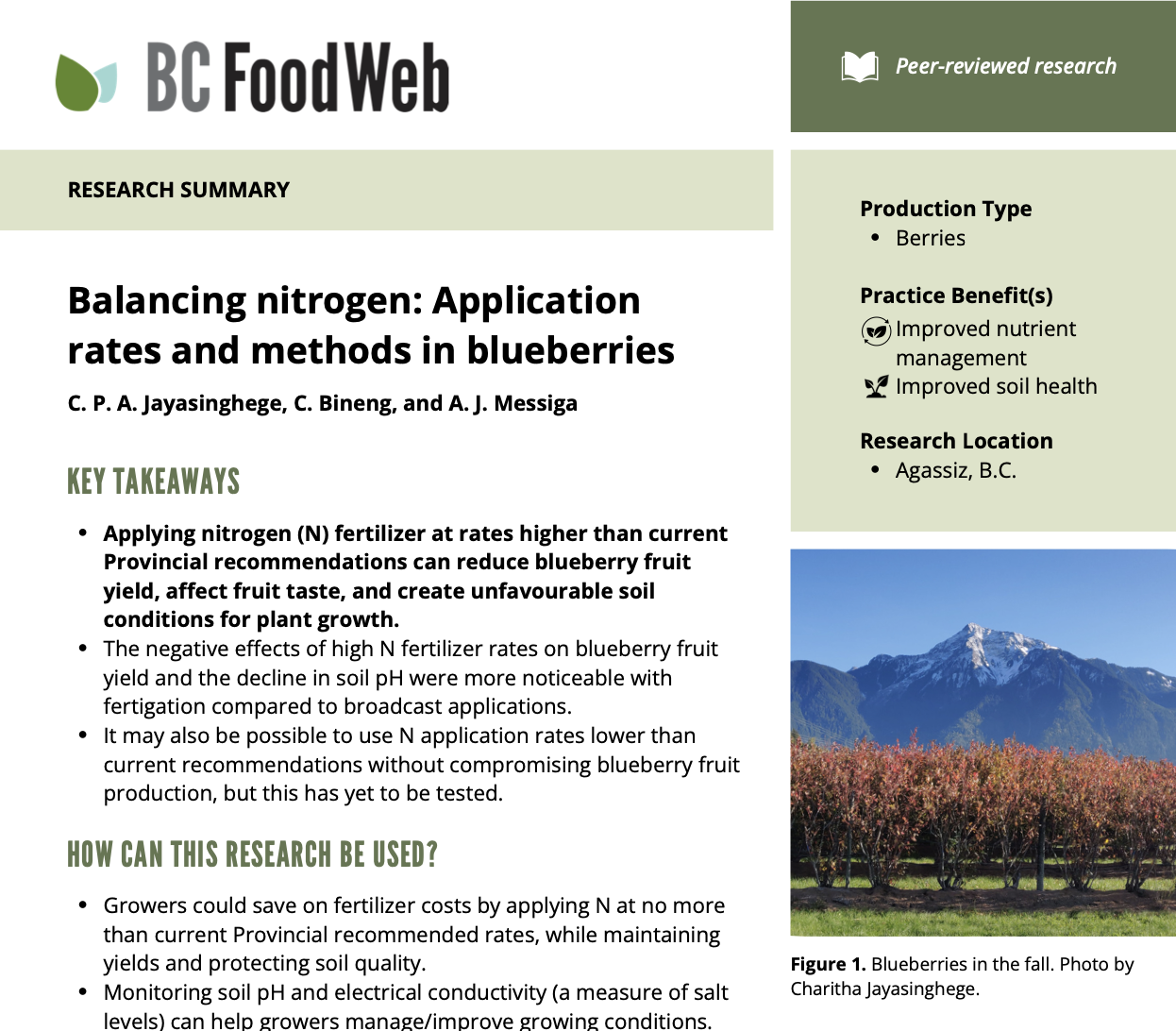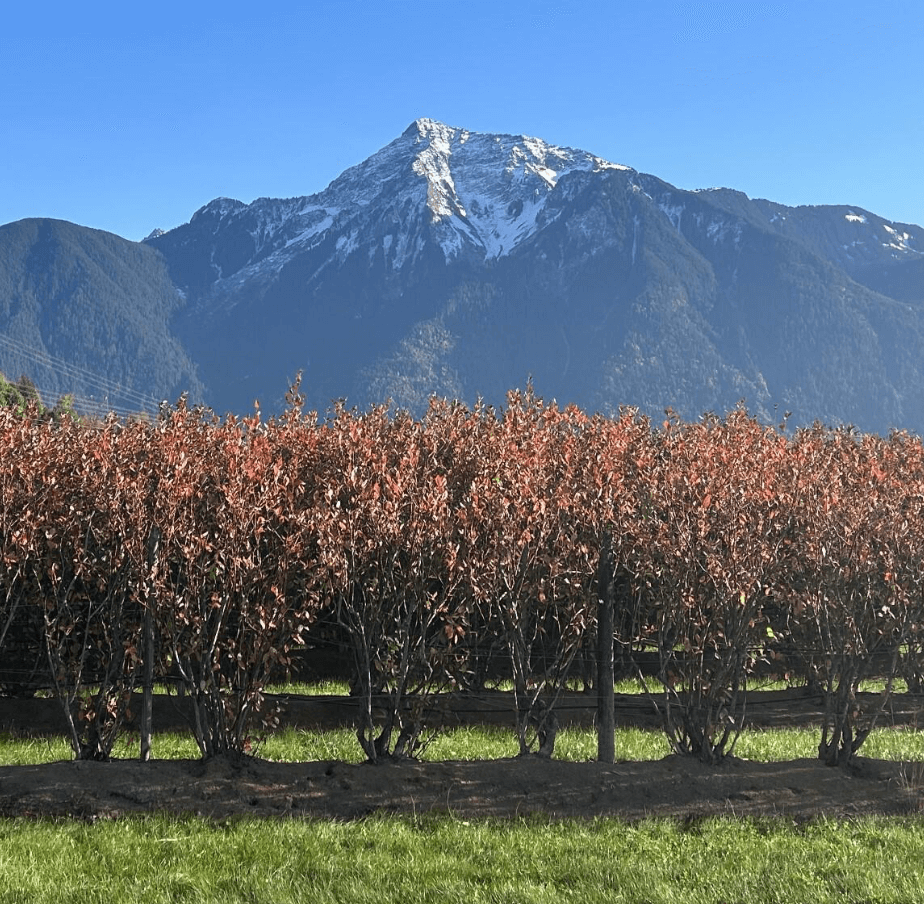Balancing nitrogen: Application rates and methods in blueberries
Introduction
Based on the Government of British Columbia’s (B.C.) ‘Blueberry Production Guide: Nutrient Management’, this study tested four different N application rates: no N applied (‘0x’), the recommended N rate (‘1x’), 1.5 times the recommended rate (‘1.5x’), and 2 times the recommended rate (‘2x’).
Click the link above to read the full research brief.
About this Brief
This brief was prepared by Juliana Cao from the BC Food Web team with the help of Charitha P.A. Jayasinghege, and is based on the following scientific journal article:
Jayasinghege, C. P. A., Bineng, C., & Messiga, A. J. (2024). Effects of long-term nitrogen fertilization and
application methods on fruit yield, plant nutrition, and soil chemical properties in highbush blueberries.
Horticulturae, 10(11). https://doi.org/10.3390/horticulturae10111205
Have Feedback or Questions?
Let us know your thoughts about the brief at bc.foodweb@ubc.ca.
Key Findings
- Applying nitrogen (N) fertilizer at rates higher than current Provincial recommendations can reduce blueberry fruit yield, affect fruit taste, and create unfavourable soil conditions for plant growth.
- The negative effects of high N fertilizer rates on blueberry fruit yield and the decline in soil pH were more noticeable with fertigation compared to broadcast applications.
- It may also be possible to use N application rates lower than current recommendations without compromising blueberry fruit production, but this has yet to be tested.



